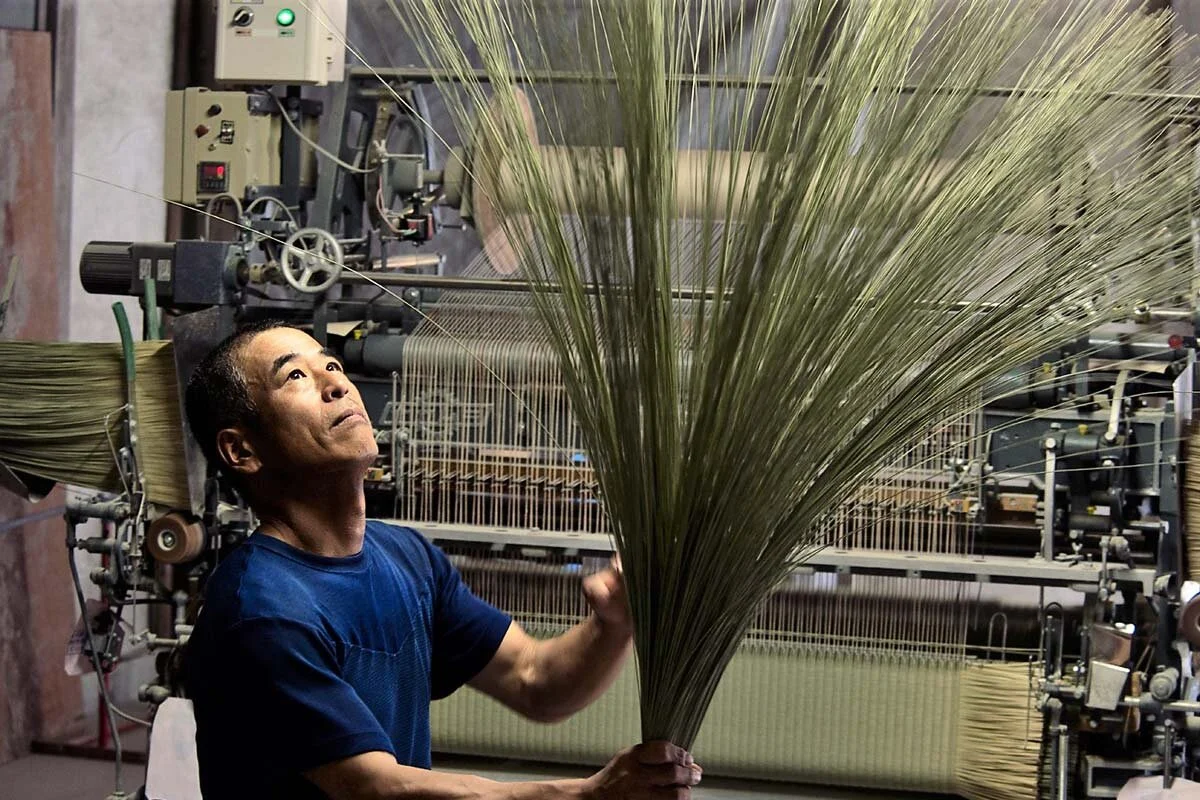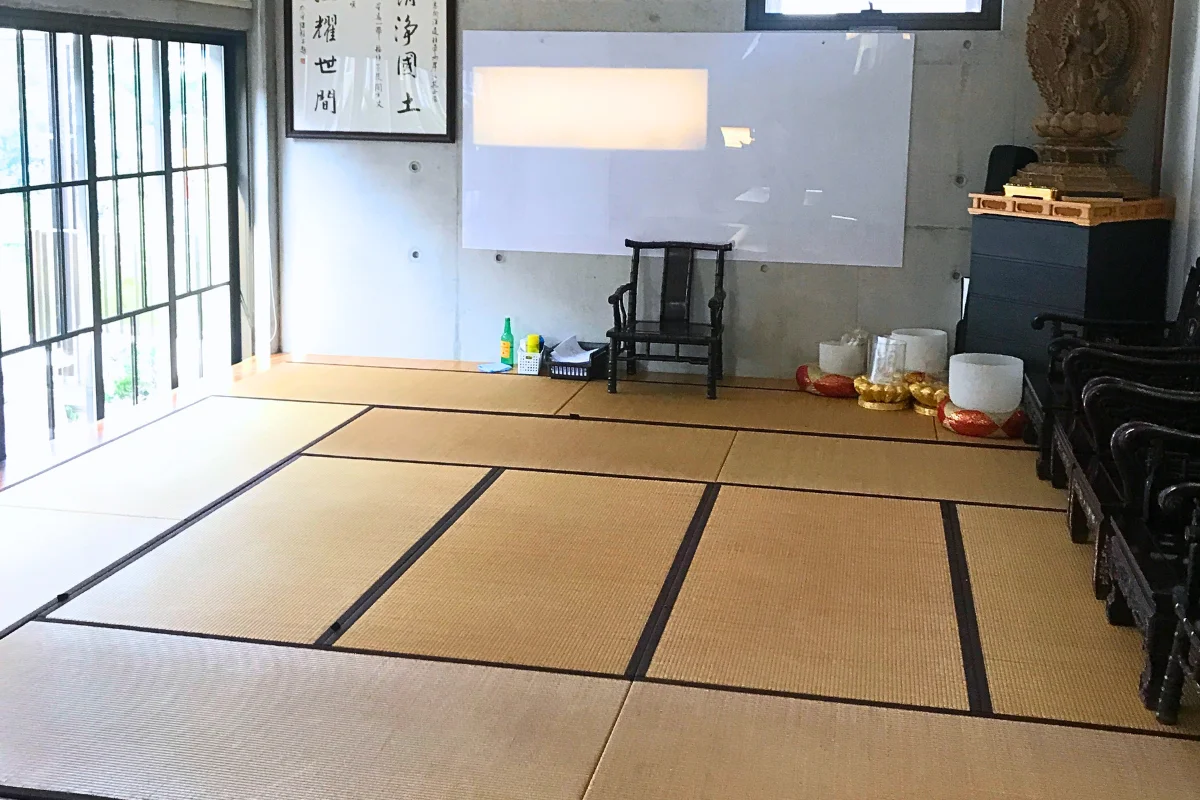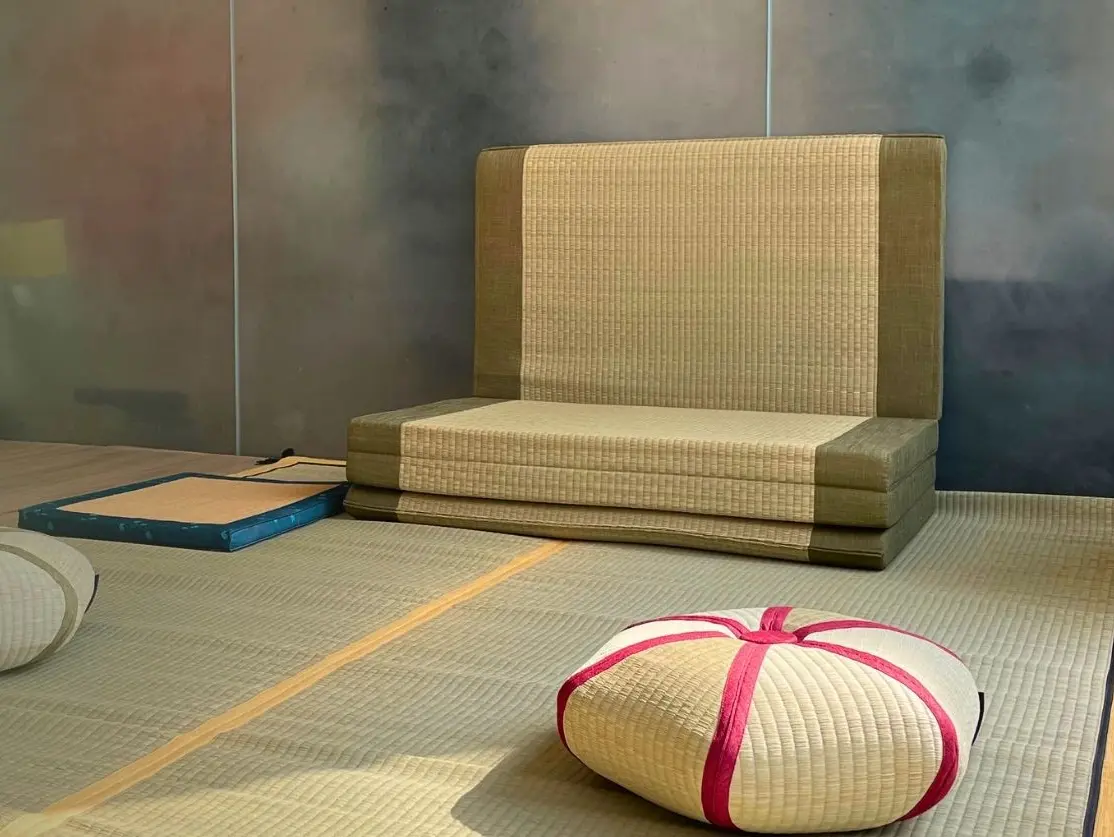Tatami mats, woven from natural Igusa grass, are much more than flooring in Japanese culture. They are a symbol of harmony, simplicity, and balance, profoundly influencing the design of traditional Japanese architecture. The presence of Tatami reflects the values of mindfulness and intentional living, shaping the aesthetic, functionality, and spiritual essence of Japanese spaces.
Tatami as the Foundation of Space Design

In traditional Japanese architecture, Tatami serves as both a physical and conceptual foundation. Rooms are often measured in Tatami mats rather than square feet or meters. A space described as “eight Tatami mats” not only conveys its dimensions but also hints at its intended purpose and ambiance.
The standard size of a Tatami mat subtly dictates the proportions of a room, creating a sense of order and balance. This modular approach ensures that rooms are harmoniously aligned, promoting a sense of flow and calm. The rectangular shape of the Tatami encourages clean, uncluttered layouts that reflect the principles of ma, or the intentional use of empty space.
The Role of Tatami in Zashiki Rooms

Zashiki, or traditional Japanese Tatami rooms, are spaces designed for meditation, tea ceremonies, or quiet gatherings. Tatami mats serve as a grounding element, their natural texture and muted colors creating a serene atmosphere. These rooms often feature shoji screens, sliding doors made of wood and paper, which enhance the interplay of light and shadow, fostering a deeper connection with nature.
Tatami also dictates behavior within the space. Footwear is prohibited, ensuring that the mats remain pristine and that visitors experience their subtle softness directly. Sitting on Tatami encourages mindfulness and proper posture, while lying on it connects the body to the earth, grounding one in the present moment.
Aesthetic Harmony and Natural Materials

Tatami mats embody the Japanese aesthetic principle of wabi-sabi, which finds beauty in imperfection and transience. Over time, Tatami changes color, aging gracefully from fresh green to a warm golden hue. This natural transformation reminds inhabitants of the impermanence of life, encouraging them to cherish the present.
The natural materials used in Tatami—Igusa grass and rice straw—create a sensory experience that ties traditional Japanese architecture to the surrounding environment. The earthy scent of Igusa enhances the ambiance of a room, while the breathable properties of the mats regulate humidity and temperature, making the space comfortable year-round.
The Spiritual Dimension of Tatami

Tatami mats hold spiritual significance in Japanese culture. They are the foundation for many rituals, including the chanoyu, or tea ceremony, where every movement is deliberate and imbued with meaning. The alignment of the Tatami in these settings is precise, reflecting a respect for tradition and an appreciation for symmetry and order.
In Buddhist temples, Tatami mats are used in meditation halls, providing a grounding surface for practitioners. The simplicity of the Tatami encourages a focus on the practice itself, free from distractions.
Tatami’s Enduring Influence
Even as modern architecture evolves, the influence of Tatami remains evident. Contemporary Japanese homes often integrate Tatami rooms as a nod to tradition, offering a tranquil retreat within urban landscapes. The legacy of Tatami continues to inspire minimalist design worldwide, reminding us of the importance of harmony, balance, and connection to nature.
Tatami is not merely a design element; it is a philosophy woven into the fabric of Japanese life. Its presence transforms architecture into a living, breathing expression of mindfulness, inviting us to slow down, embrace simplicity, and find peace in our surroundings.
